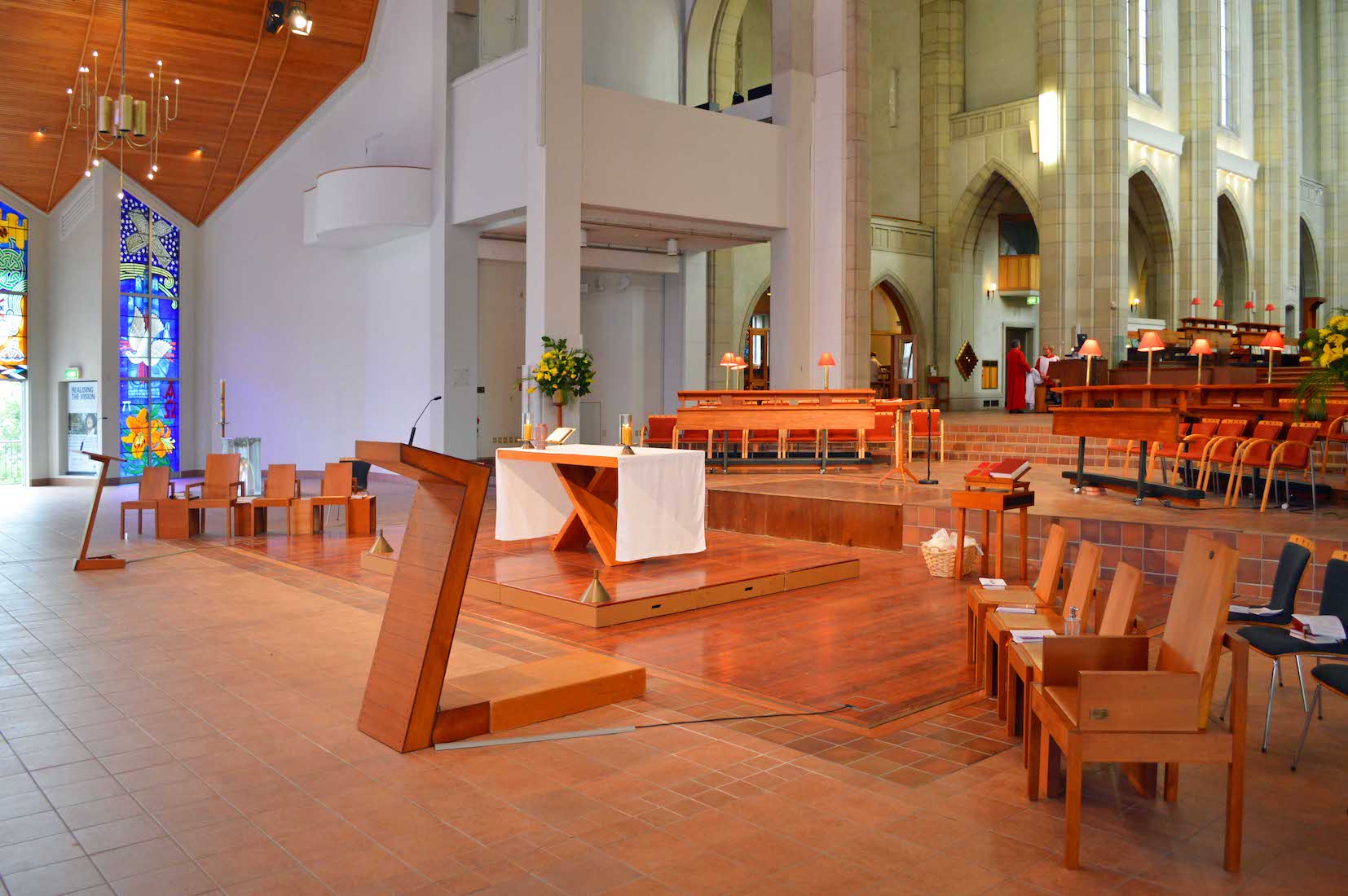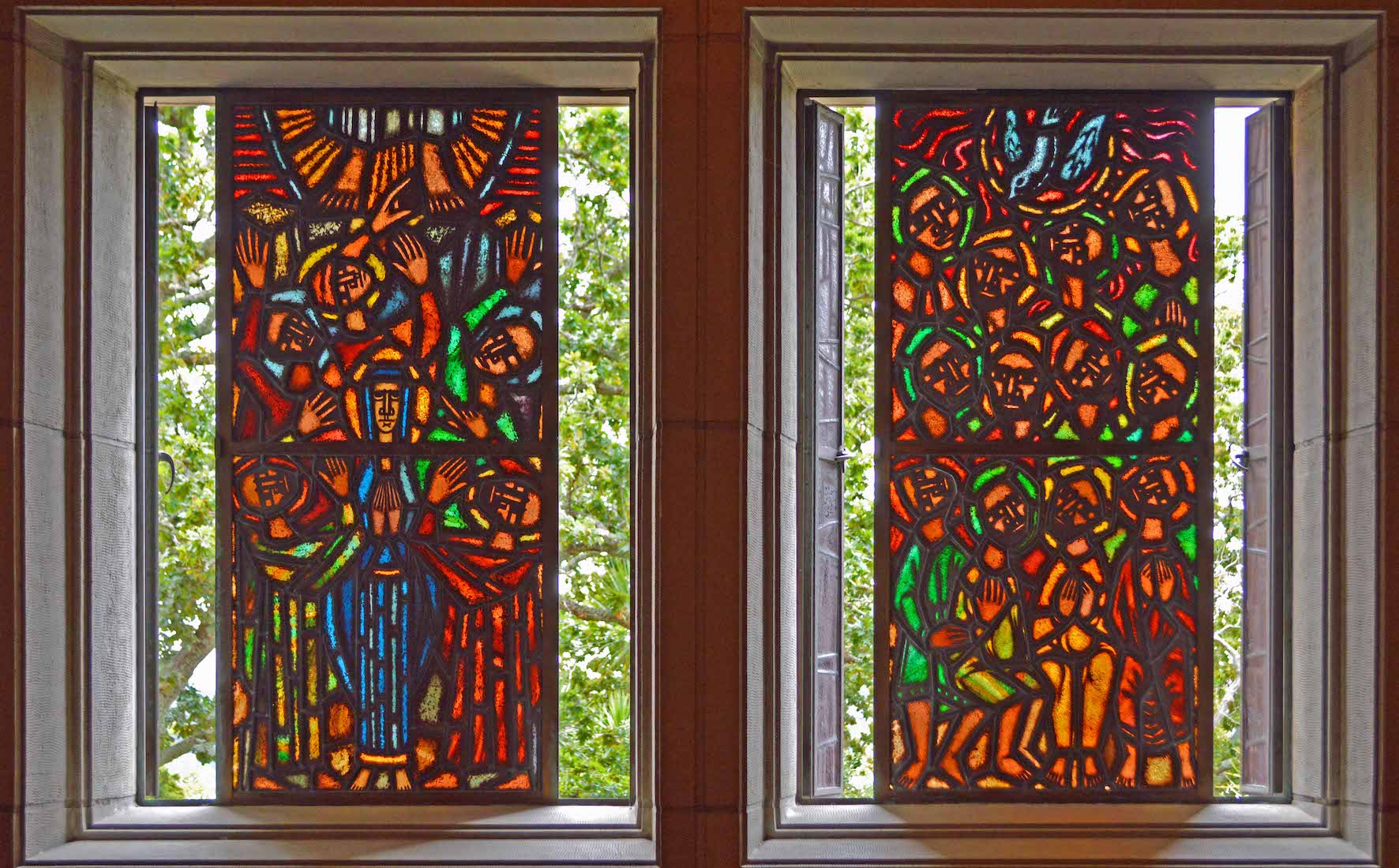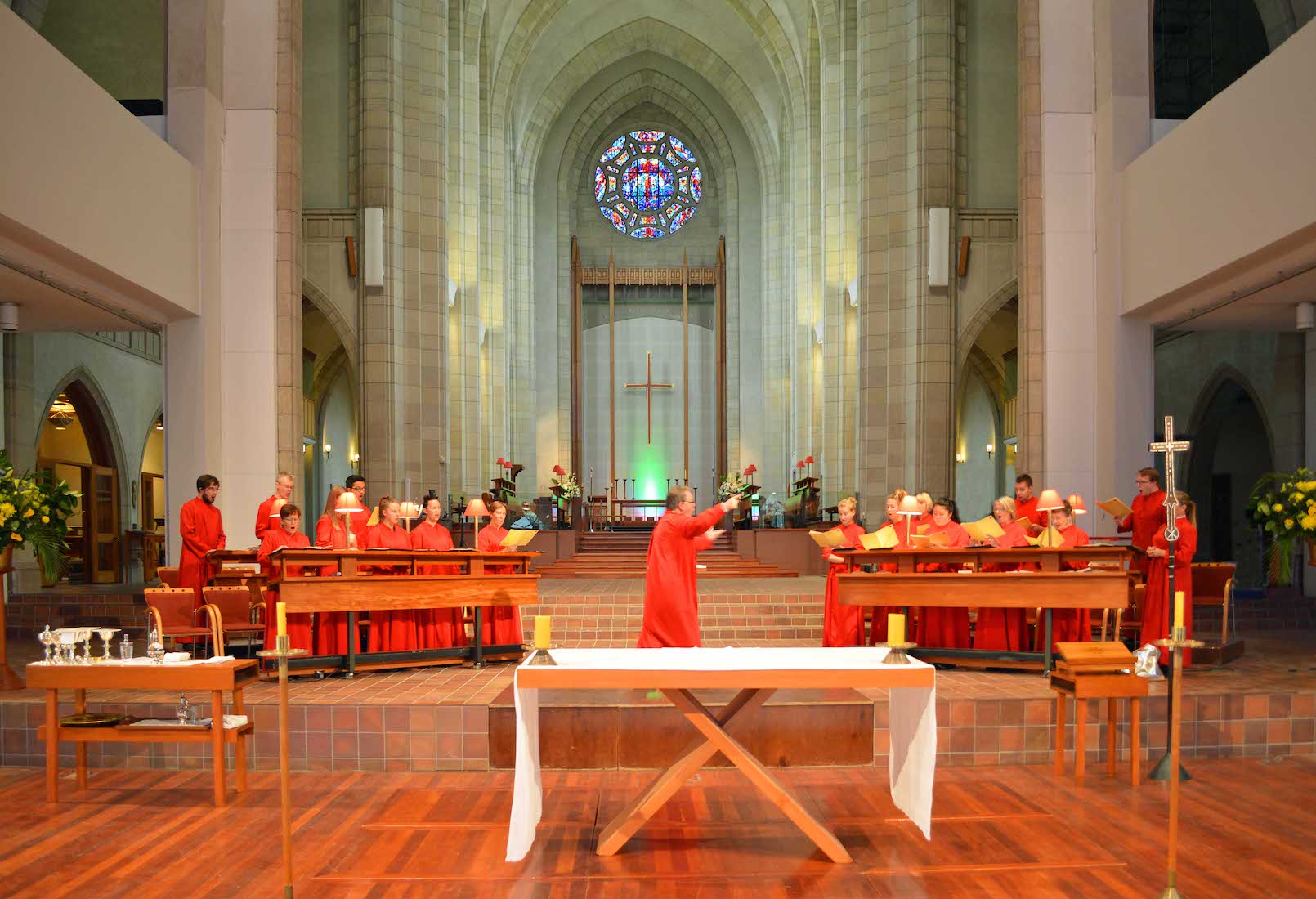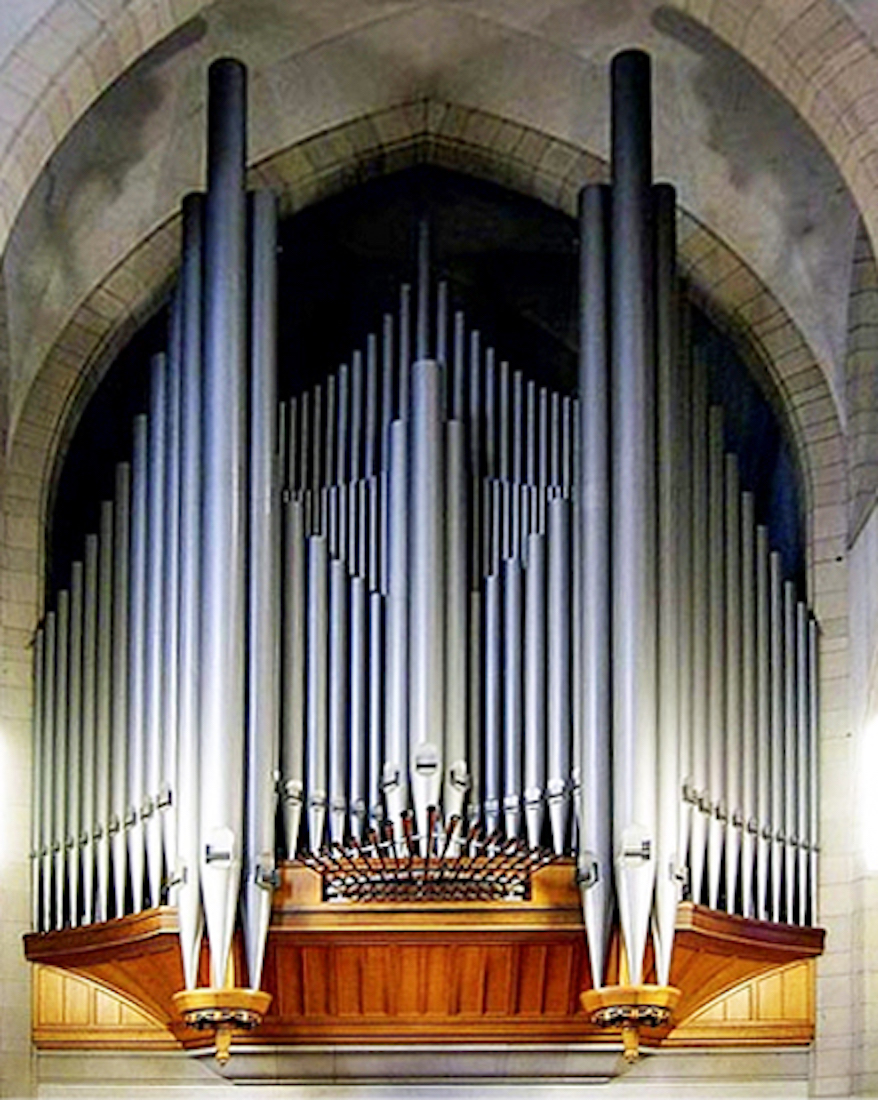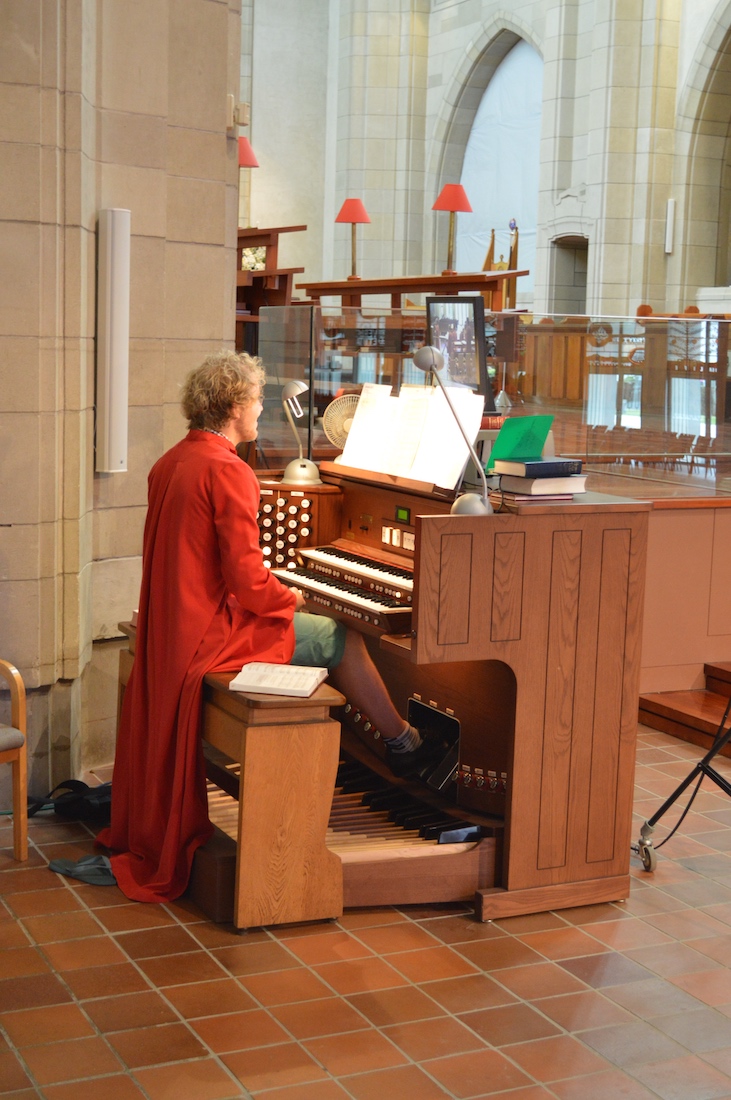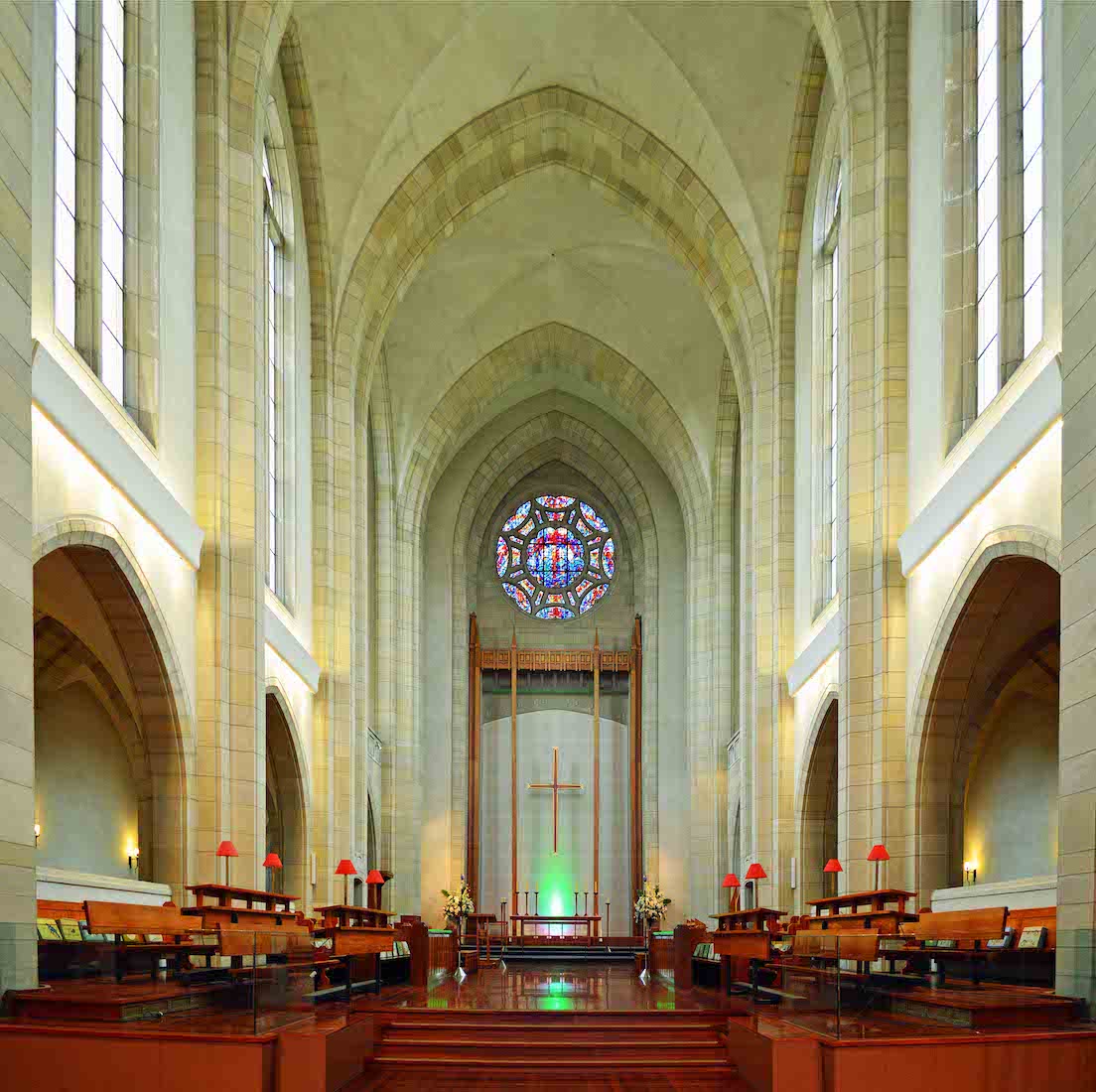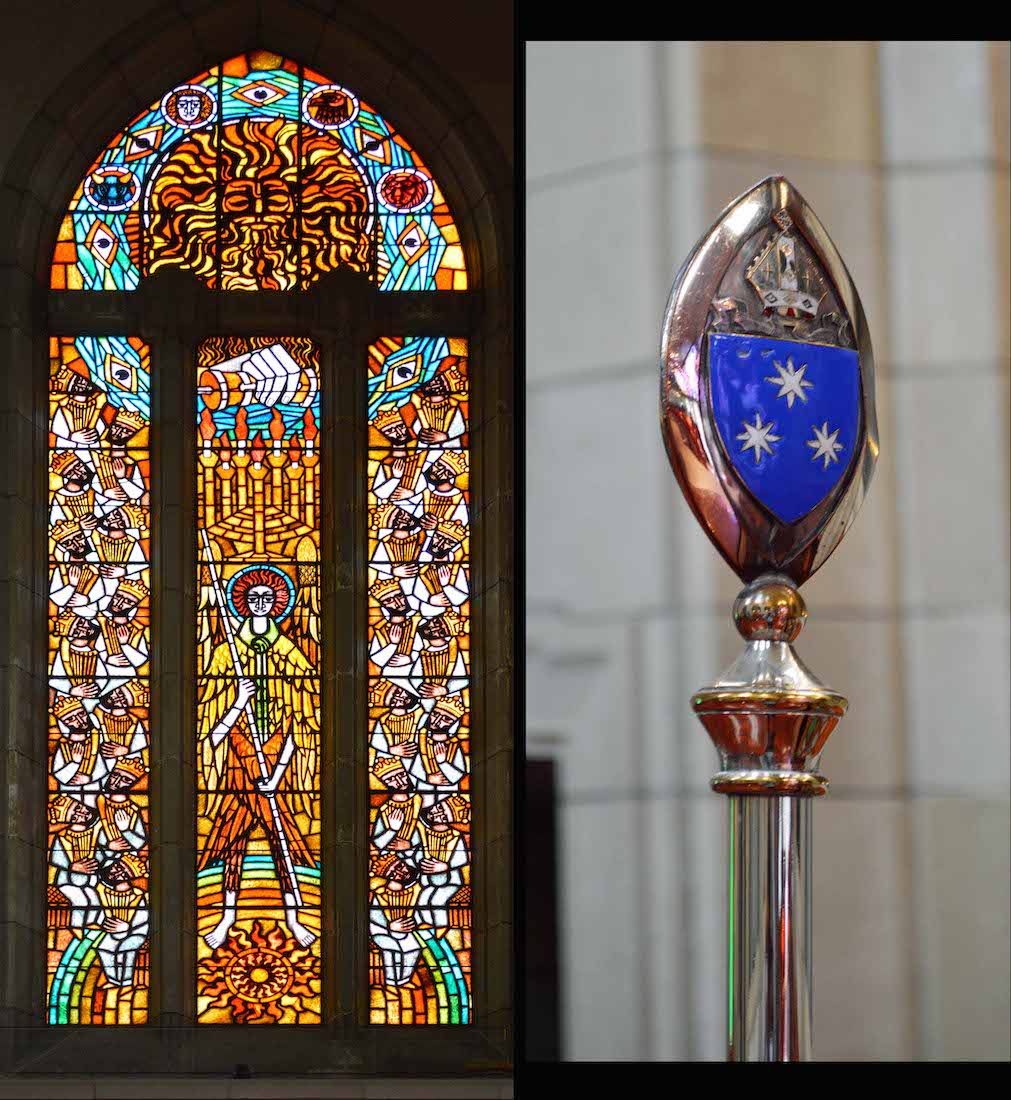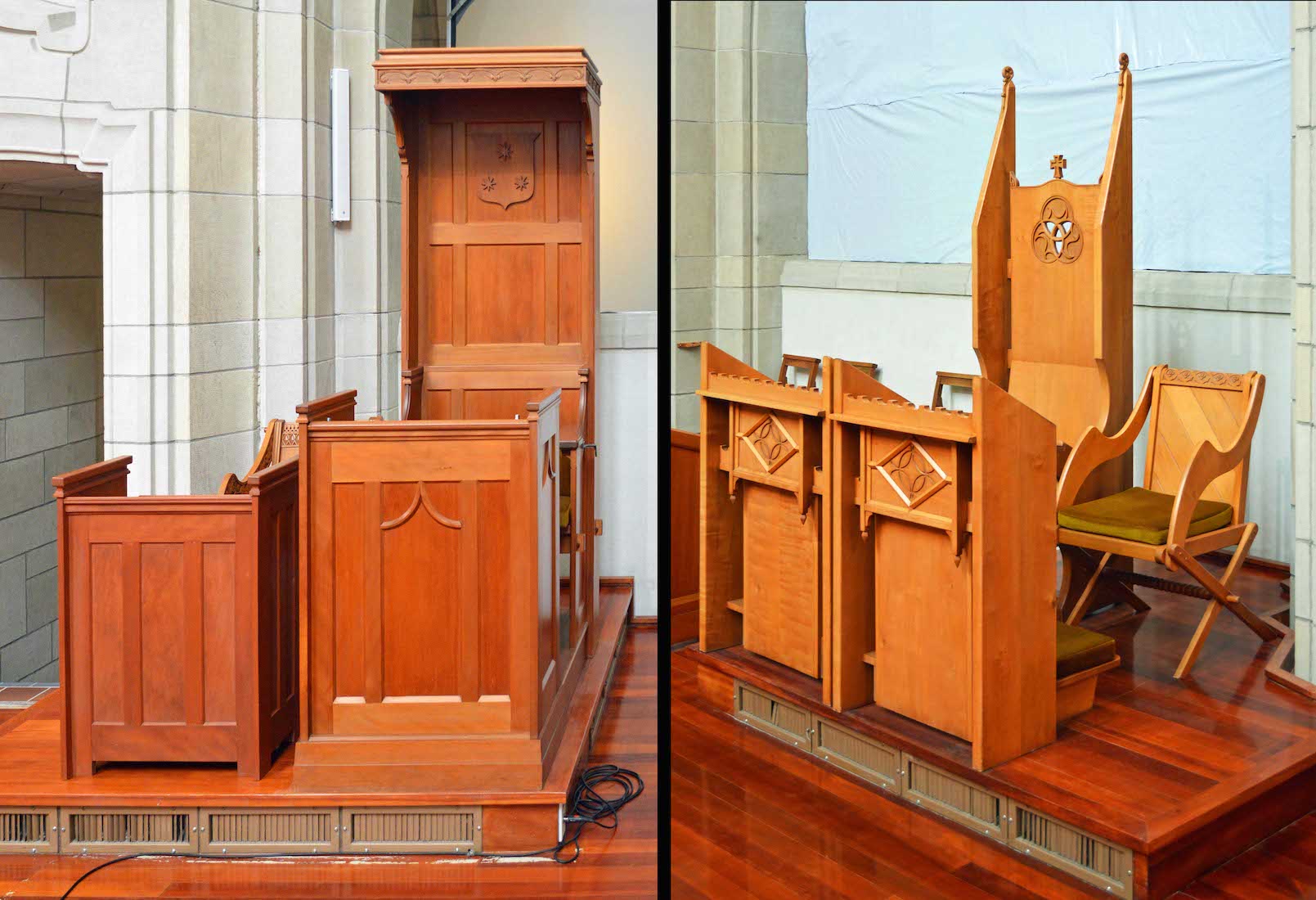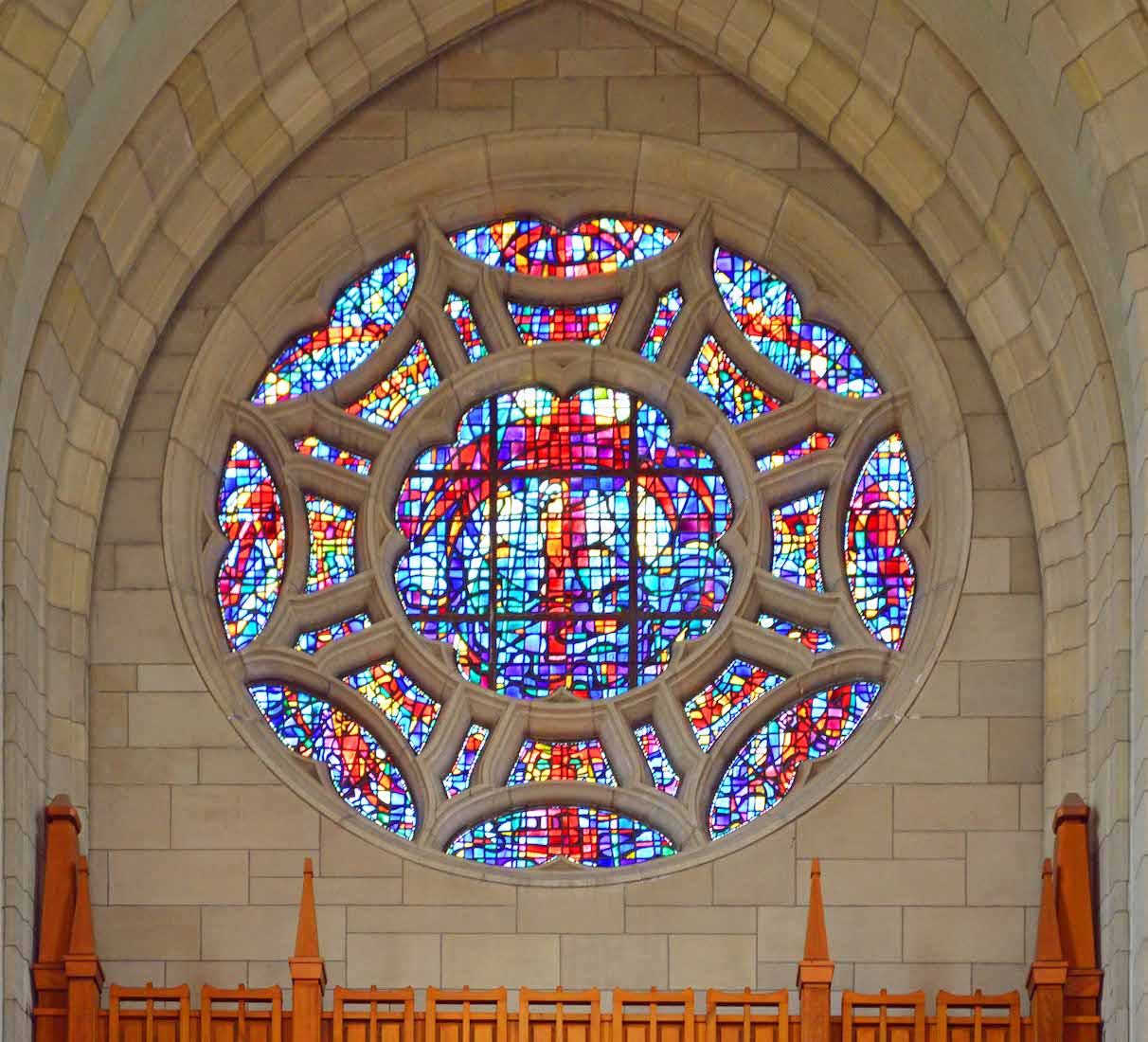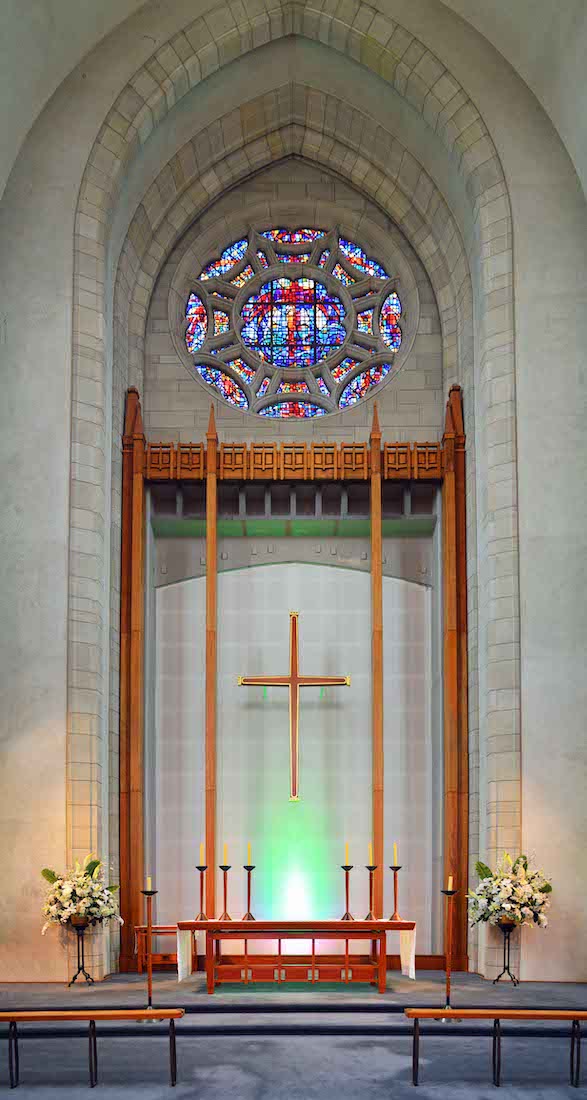
Also on the West wall is a small model church and a bell. The church is likely to be St Stephen’s Chapel, an early forerunner of St Mary’s. PLAN
42. CATHEDRAL STAIRWAY WINDOW

We now leave St Mary’s and walk around to the Cathedral Hall. At the Cathedral end of the hall, a stairway leads down to the carpark. It is illuminated by this interesting window, but I cannot find any information about this.
44. FRONT NAVE.
We move to the front of the nave. The altar is before us, but we will first investigate the little chapel behind it, and to the right – the Marsden Chapel. Note the dark diamond on the wall to the right of the Chapel.
46. SCULPTURES
Outside the Chapel is a small Madonna and Child sculpted by R. N. Field in 1975. Inside is this figure of Kathleen Hall, an Anglican missionary nurse from old St. Sepulchres in Auckland (now the Anglican Maori Mission), who decided in 1935 to work in China. She had shunned easier posts and chose instead villages where there was barely food for one meal a day and there were no medical supplies.
47. CHAPEL
We begin with an overview of the Chapel, starting at the rear. Kathleen Hall stands in the back corner.
48. MARSDEN CHAPEL
At the front of the Chapel is a small altar and a cross. The Chapel has five windows designed by John Baker.
49. CHAPEL WINDOWS I
The windows require a little interpretation! Here at left is the Lord’s Ascension, and at right the Day of Pentecost.
50. CHAPEL WINDOWS II
The three remaining windows show (from left): the stoning of Stephen, the baptism of the Ethiopian eunuch, and the institution of the Communion.
51. CANDLES AND BELL
Just outside the Chapel is the votive candle station. This was designed by Robert Eriksen to commemorate Queen Elizabeth’s Diamond Jubilee. It was dedicated by The Archbishop of Canterbury, Dr Rowan Williams, in 2012. The bell would be used in Cathedral services.
52. CHOIR
We rejoin the Choir in practice ... . Organ and choral music are a vital part of the worship in most cathedrals.
53. ORGAN PIPES
The three manual organ was built in 1968 by Harrison and Harrison of Durham. The case was designed by Malcolm Mackenzie and features the pipes of the 32 ft Contra Salicional and the copper Fanfare Trumpets which are displayed ‘en chamade’.
55. TRANSEPT WINDOW AND WAND
This window in the North transept is the work of the respected English artist, John Baker. It illustrates a passage from the Book of Revelation. The Bishop’s wand is used in ceremonial processions.
56. KNEELERS
Every cathedral has its own style of kneelers. I particularly noticed the NZ bird and flower theme here.
57. CATHEDRA AND CHAIR
Holy Trinity is a cathedral rather than a church because of the presence of the Bishop’s throne or ‘cathedra’, shown at left. At right is the Precentor’s Chair. A precentor is a person who helps facilitate worship Sunday by Sunday.
58. ROSE WINDOW
The rose window above the sanctuary is the work of English artist Carl Edwards. It symbolizes the Trinity of Father (eye), Son (cross), and Holy Spirit (dove).
60. BACK TO THE NAVE
We normally finish a cathedral tour at the sanctuary, but here we return to the nave which is uniquely colourful.



